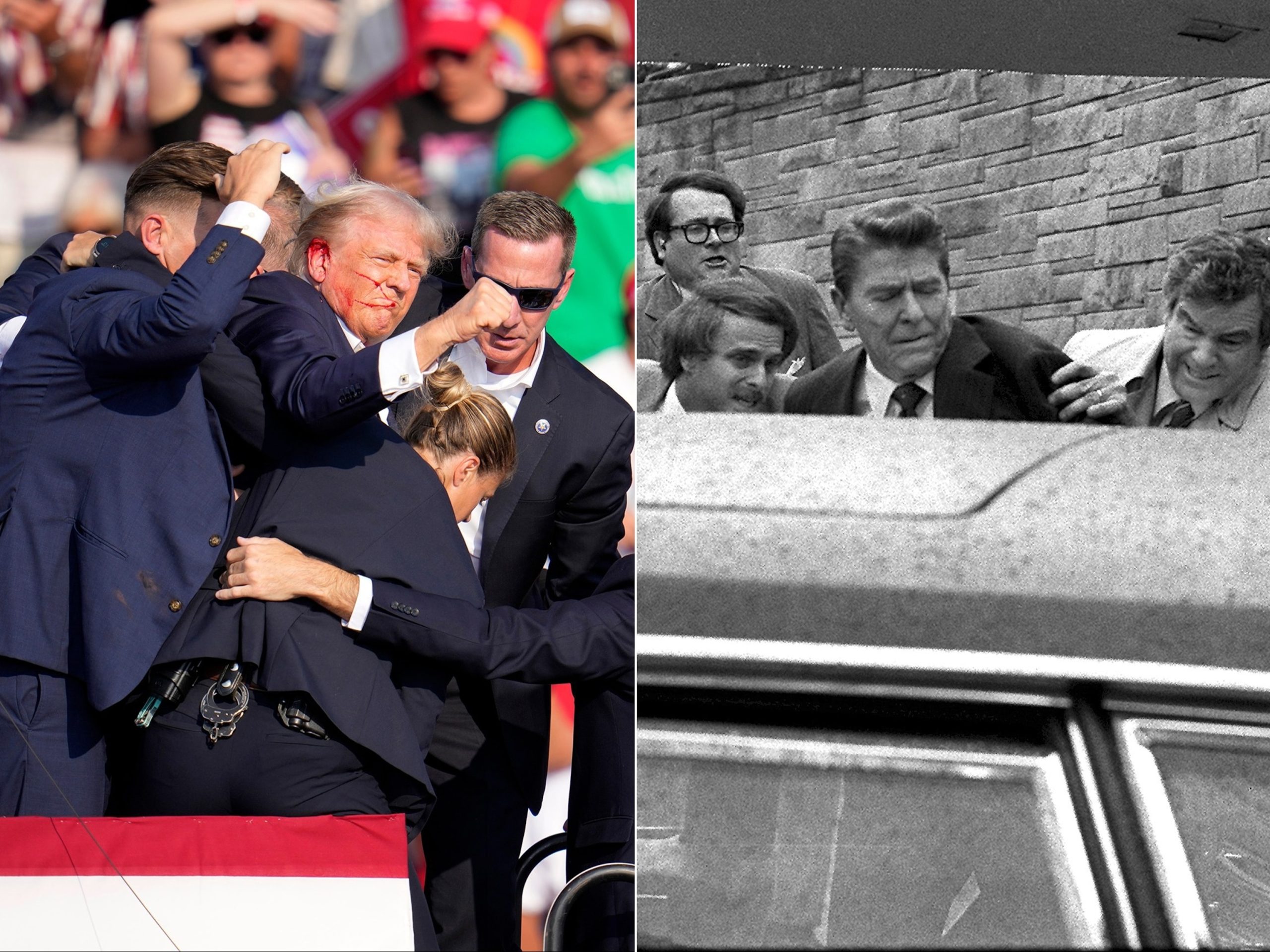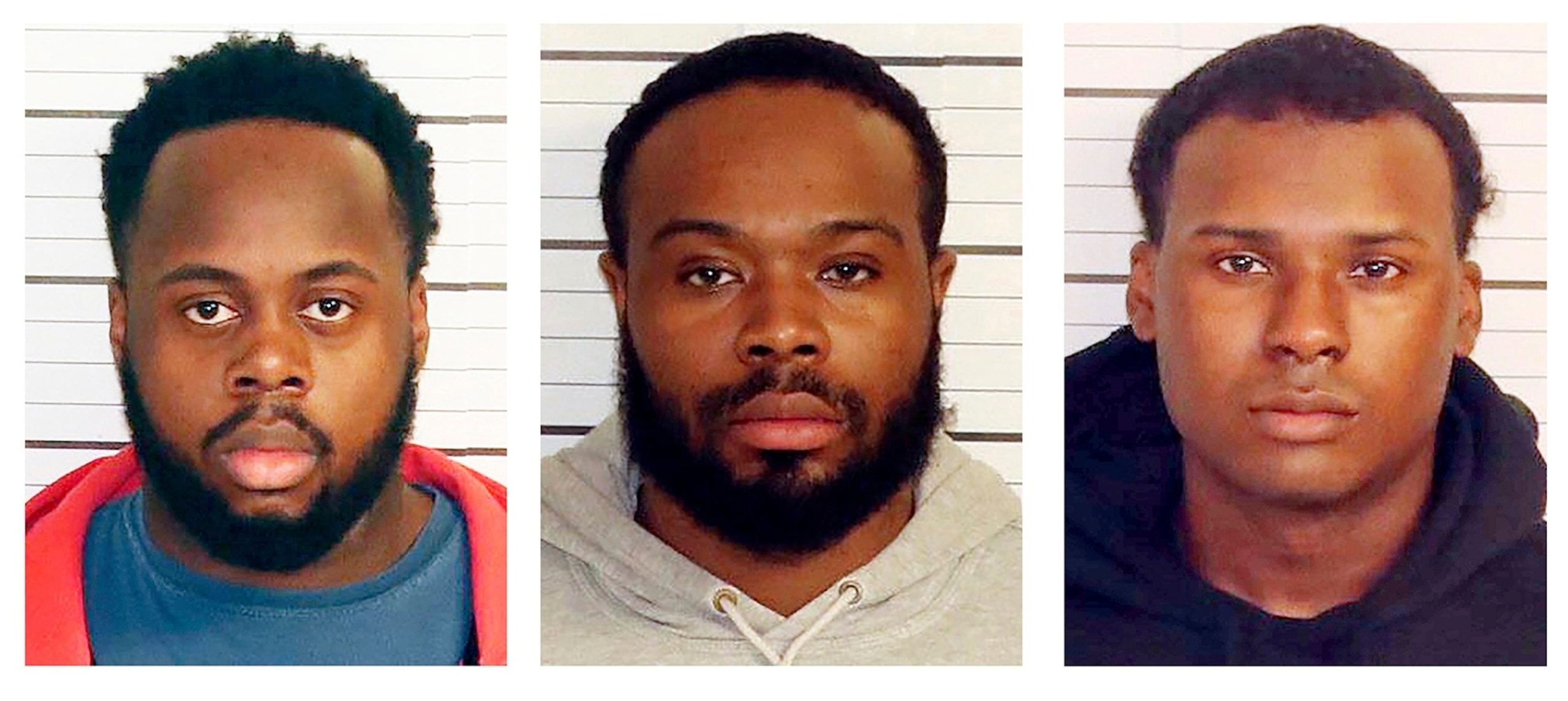The assassination attempt made against Donald Trump during his campaign rally in Pennsylvania over the weekend sent shockwaves through the nation and added the former president to a list of American leaders who have been targeted by gun violence.
The shooting Saturday left one spectator and the suspected gunman dead, two others injured and Trump bleeding from a gunshot wound to his upper right ear.
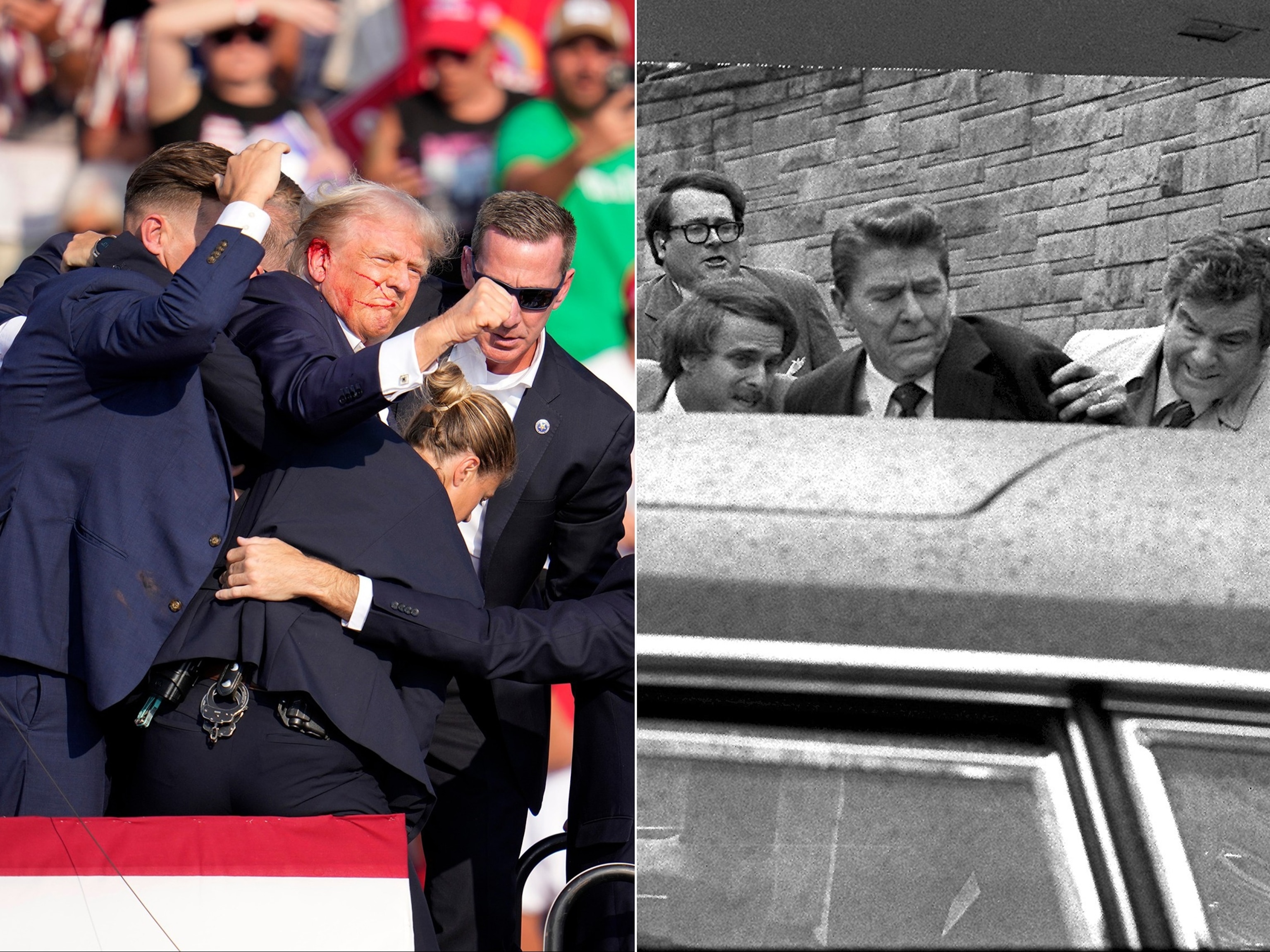
In this split image, Republican presidential candidate former President Donald Trump is helped off by Secret Service at the stage after shots at a campaign event in Butler, Pa., July 13, 2024, and former President Ronald Reagan is shoved into the President’s limousine by Secret Service agents after being shot outside a Washington hotel, March 30, 1981.
Gene J. Puskar and Ron Edmonds/AP
In the days following the attack, many have been left to wonder how the harrowing event will impact the remainder of the election season — a question history books may offer insight into.
The attack on Trump garnered immediate comparisons to the attempt on the life of then-President Ronald Reagan in 1981.

In this Monday, March 30, 1981 combination file photos, President Reagan waves, then looks up before being shoved into Presidential limousine by Secret Service agents after being shot outside a Washington hotel.
Ron Edmonds/AP
On March 30, 1981, gunfire erupted outside the Hilton Hotel in Washington, D.C., as Reagan was exiting the building after delivering a speech before members of the American Federation of Labor and Congress of Industrial Organizations.
The shooter, John Hinckley Jr., fired six rounds from a .22-caliber revolver at the president, who had his hand raised, waving to the crowd. The bullet hit Reagan’s ribcage, just inches from his heart, and punctured his lung.
Three other individuals were also shot in the attack, including Reagan’s press secretary, James Brady, who was disabled from the gunshot striking his head.
As shots rang out, the then-70-year-old president was immediately swarmed by Secret Service agents and pushed into a waiting limousine that rushed him to George Washington University Hospital for life-saving emergency surgery.
The striking visual similarities between Reagan and Trump being swarmed by Secret Service agents during the attack and both men having a raised hand at the time of the incident (Reagan before and Trump with his fist in the air after) — are noticeable.

Former President Ronald Reagan waves and then looks up before being shoved into the President’s limousine by secret service agents after being shot outside a Washington hotel, March 30, 1981.
Ron Edmonds/AP
Both presidents also sought to display an image of courage and resilience in the aftermath of the shootings. Reagan chose to walk into the hospital despite being seriously wounded; Trump opted to make his scheduled appearance and speech at the Republican National Convention only two days after the attack.
Another resemblance between the two attacks is the scrutiny surrounding the Secret Service. Hinckley Jr. was able to shoot at Reagan as he was exiting the hotel because he positioned himself among a crowd of journalists and spectators who were not screened by security ahead of time, according to the Associated Press.
At the rally in Butler, Pennsylvania, the building where suspected gunman Thomas Crooks scrambled onto the roof and opened fire was the staging area for the local police tactical team watching the crowd, two law enforcement officials told ABC News.
Sources previously told ABC News that the building had been swept, but investigators are trying to determine whether roof access had been properly locked down.
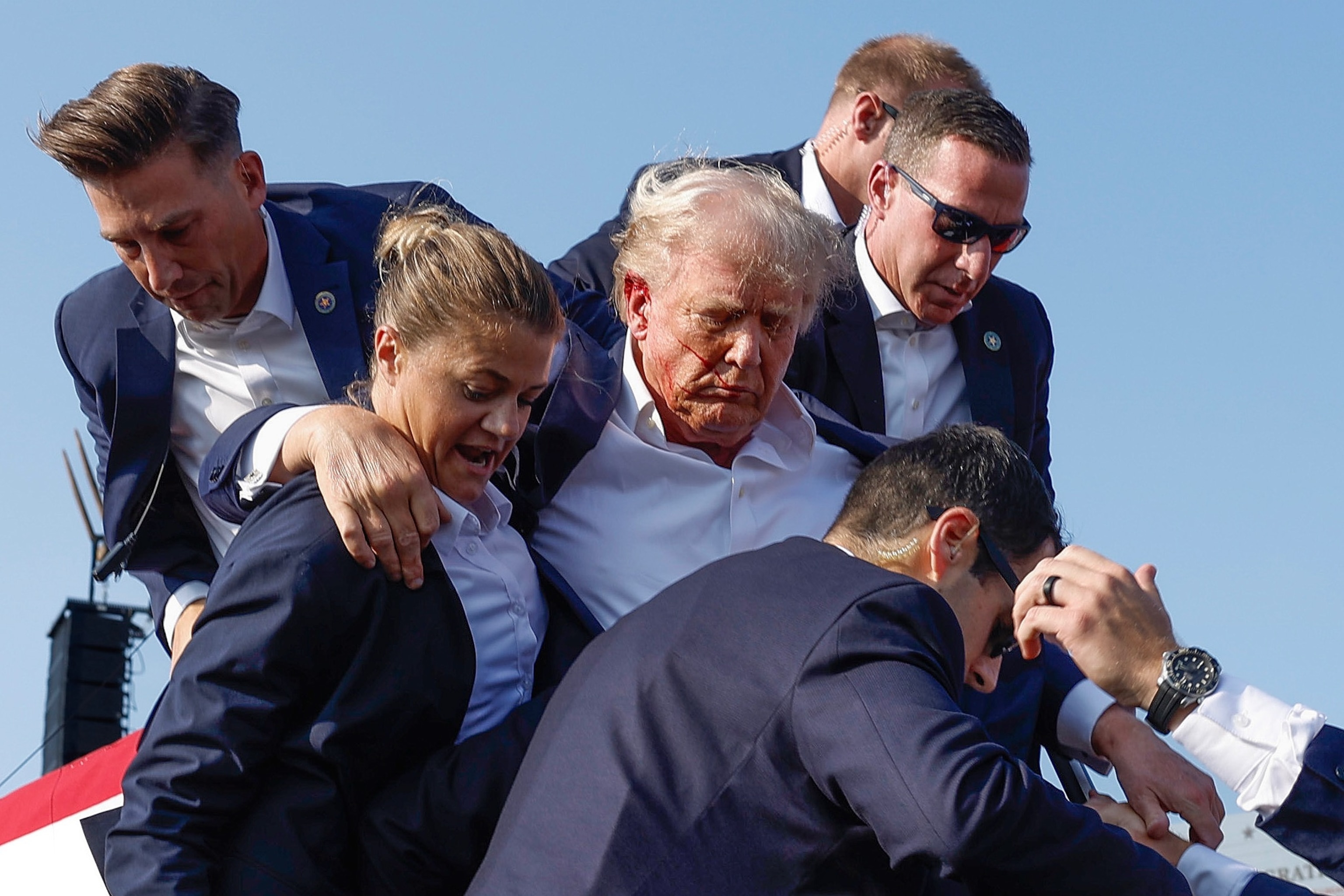
Republican presidential candidate former President Donald Trump is rushed offstage by U.S. Secret Service agents after being grazed by a bullet during a rally on July 13, 2024 in Butler, Pa.
Anna Moneymaker/Getty Images
While the political landscape has changed since 1981, only time will tell if the attack on Trump will garner the lasting admiration and public approval felt by Reagan, whose already high approval rating only increased after the shooting, according to a Gallup poll.
Additionally, Reagan’s “Make America Great Again” campaign slogan, famously co-opted by Trump in the 2020 election and throughout the 2024 election cycle, is another political tie that unites the two Republican leaders.
According to the Congressional Research Service, direct assassination attempts against presidents and candidates have occurred on at least 15 separate occasions.
The four U.S. presidents who were assassinated were Abraham Lincoln, James A. Garfield, William McKinley and John F. Kennedy.
On March 30, 1981, President Ronald Reagan was the target of an assassination attempt outside the Washington Hilton Hotel in Washington, D.C. The shooter, John Hinckley Jr., fired six shots at Reagan, hitting him and three others. Reagan was rushed to the hospital and underwent emergency surgery to remove a bullet lodged near his heart. Miraculously, he survived the attack and went on to serve two terms as President.
Fast forward to October 2020, and another sitting President, Donald Trump, faced a similar threat when a man armed with a loaded handgun attempted to breach the security perimeter at the White House. The suspect, identified as Alexander S. Rynberg, was quickly apprehended by Secret Service agents before he could cause any harm. Trump was not in immediate danger during the incident.
While both incidents involved attempts on the lives of sitting Presidents, there are several key differences between the two attacks. One of the most notable distinctions is the motivation behind the attacks. John Hinckley Jr. was reportedly obsessed with actress Jodie Foster and carried out the assassination attempt in an effort to impress her. In contrast, the motives of Alexander S. Rynberg remain unclear, as he has not publicly stated a reason for his actions.
Another difference between the two attacks is the level of security in place at the time. In 1981, security measures around the President were not as stringent as they are today. The Secret Service has since implemented numerous enhancements to protect the President, including advanced technology and increased manpower. These improvements likely played a significant role in preventing any harm from coming to Trump during the recent incident.
Despite these differences, both attacks serve as stark reminders of the dangers faced by those in positions of power. The attempted assassinations of Reagan and Trump underscore the need for constant vigilance and preparedness when it comes to protecting our leaders. It is a testament to the bravery and quick thinking of Secret Service agents that both Presidents were able to escape unharmed.
In conclusion, while the recent assassination attempt on President Trump shares some similarities with the attack on President Reagan in 1981, there are also notable differences between the two incidents. The motives of the attackers, the level of security in place at the time, and the outcomes of the attacks all contribute to a nuanced comparison of these two historical events. Ultimately, both incidents serve as reminders of the importance of maintaining strong security measures to protect our leaders from harm.
